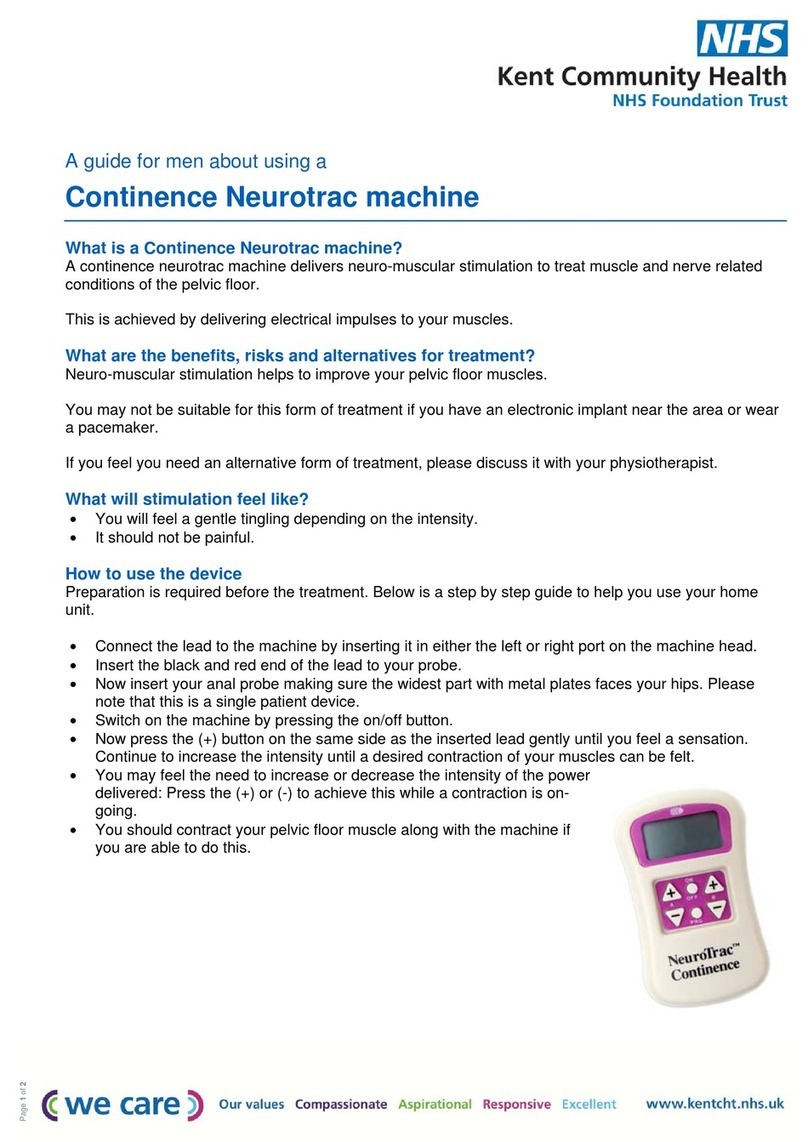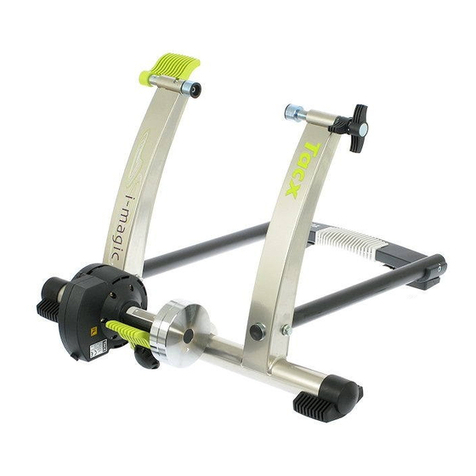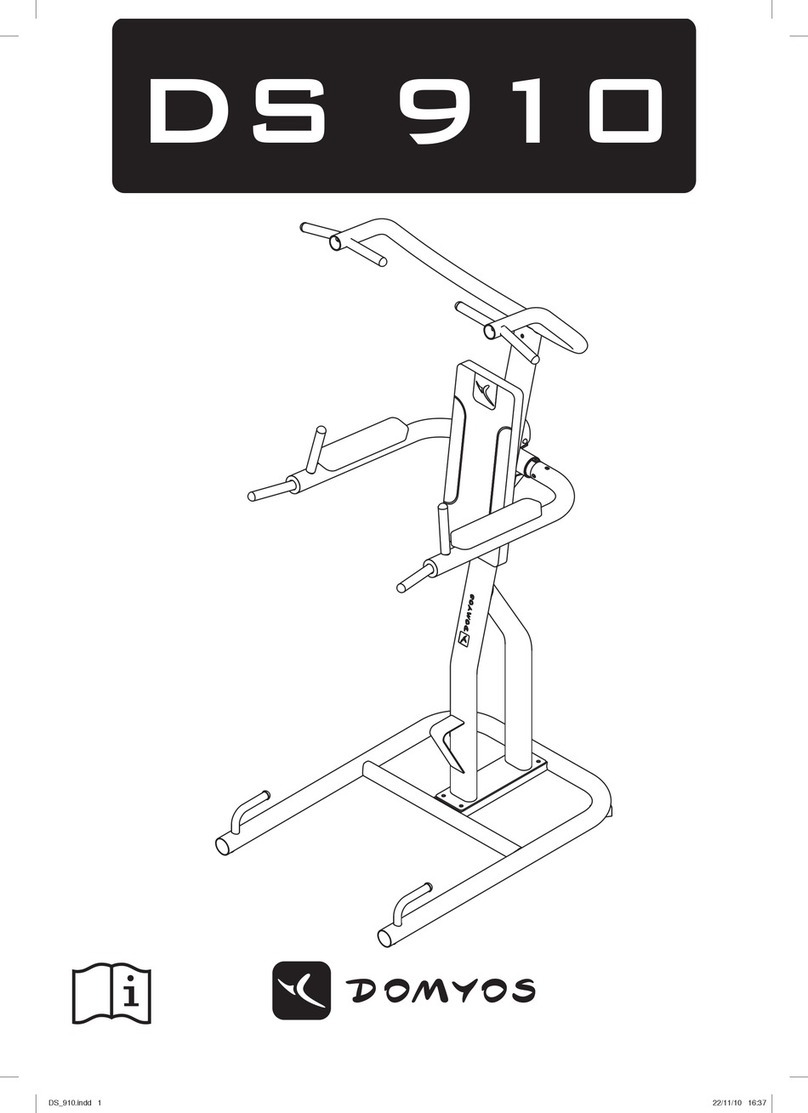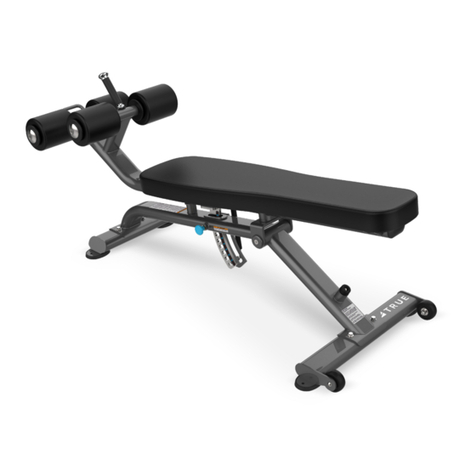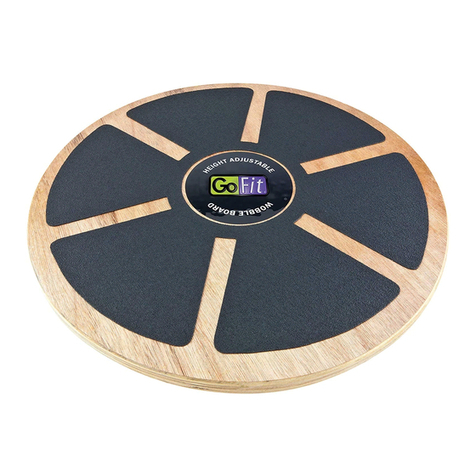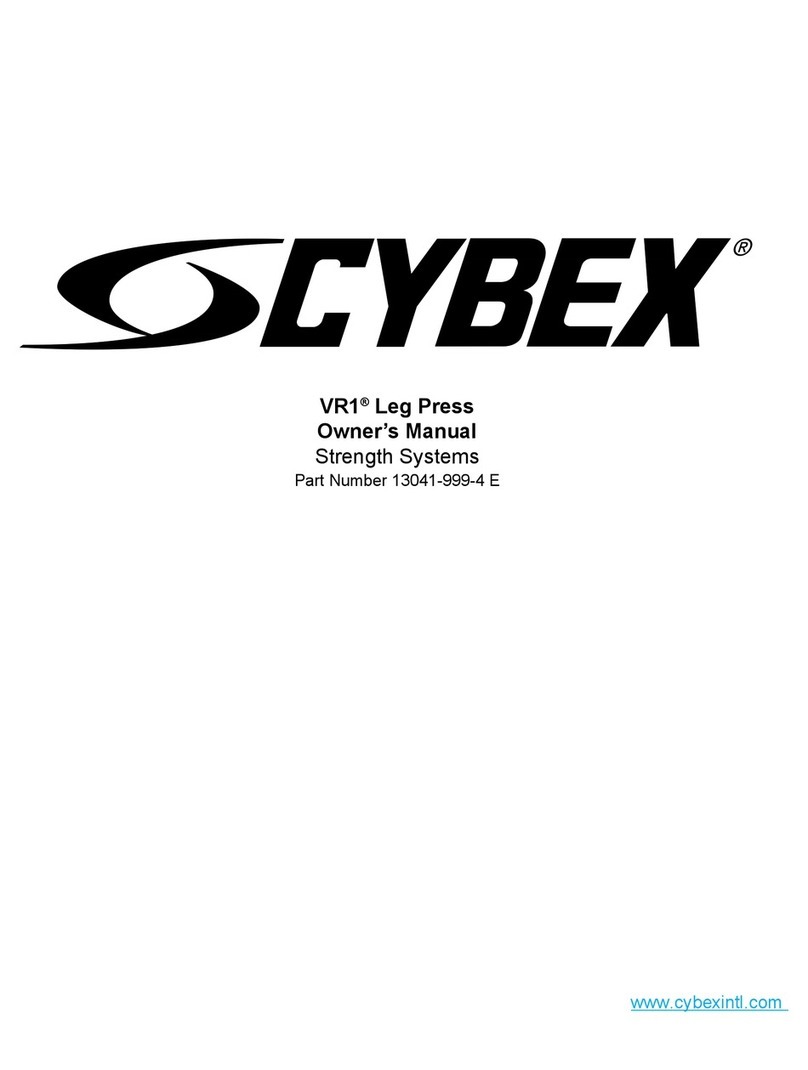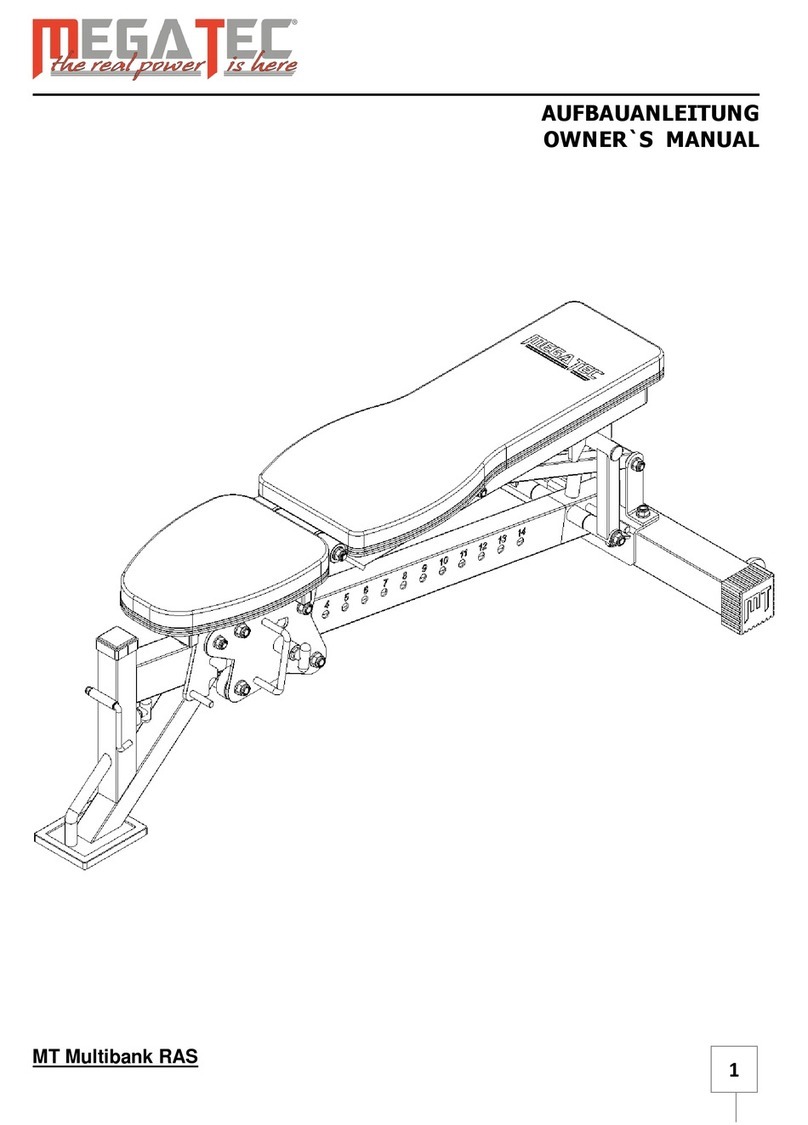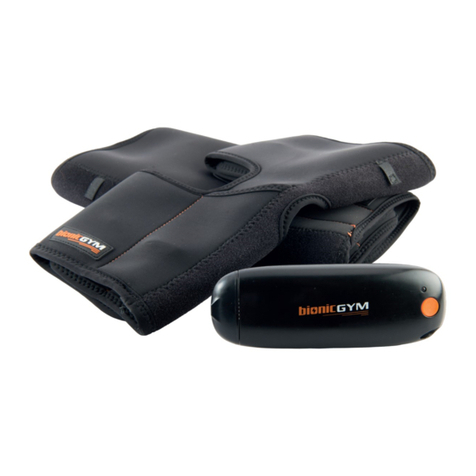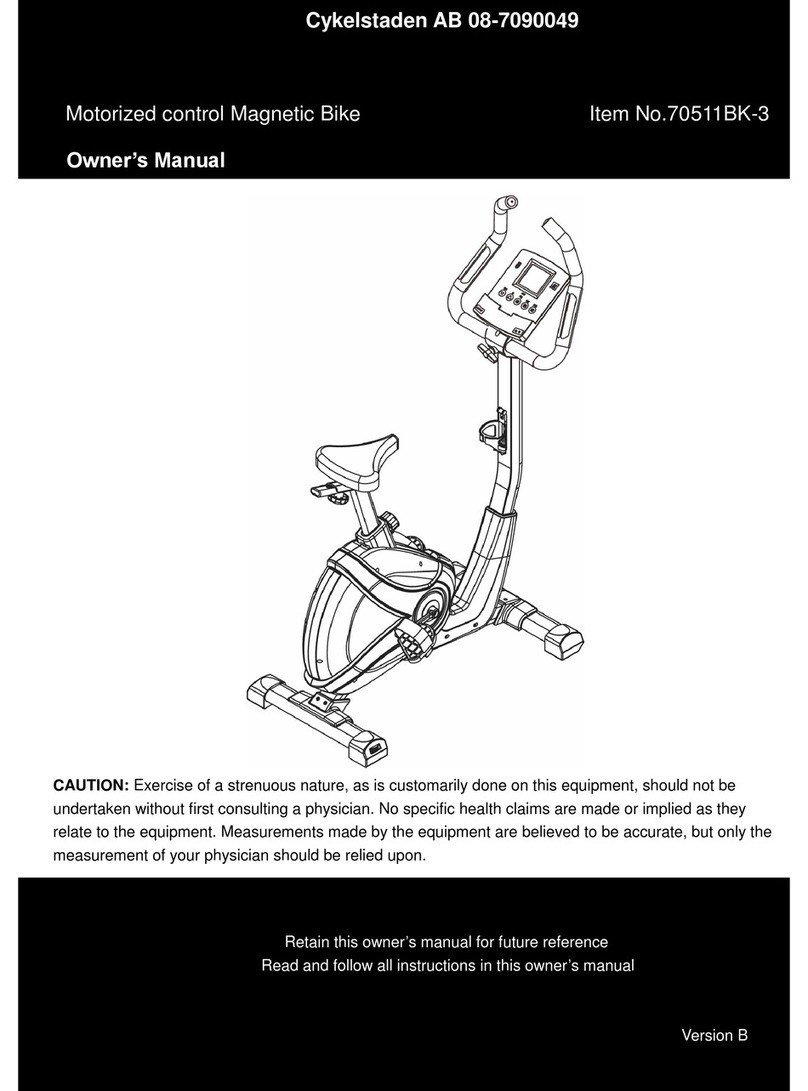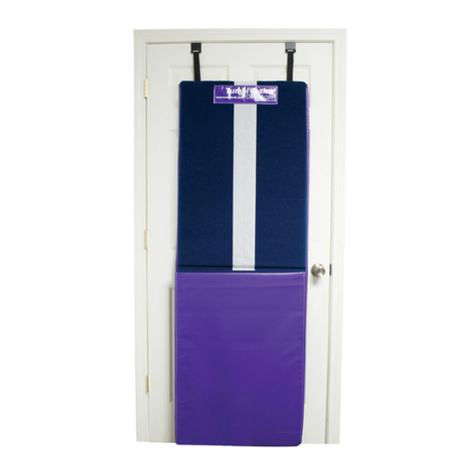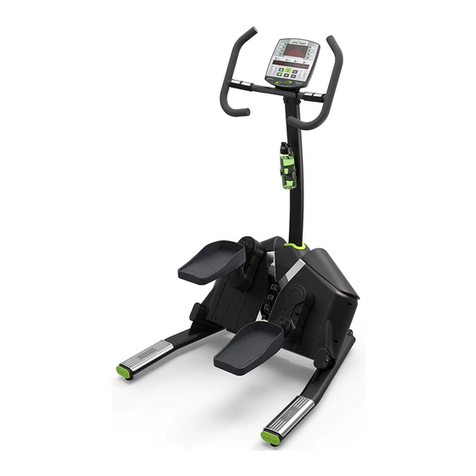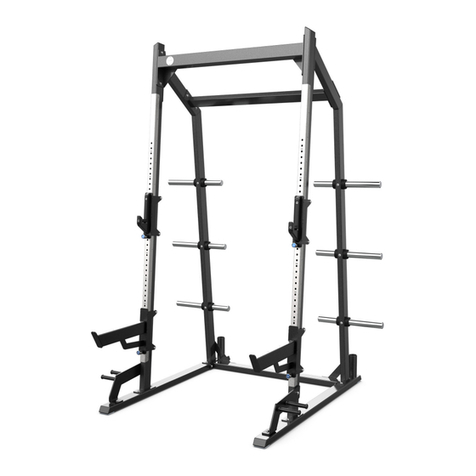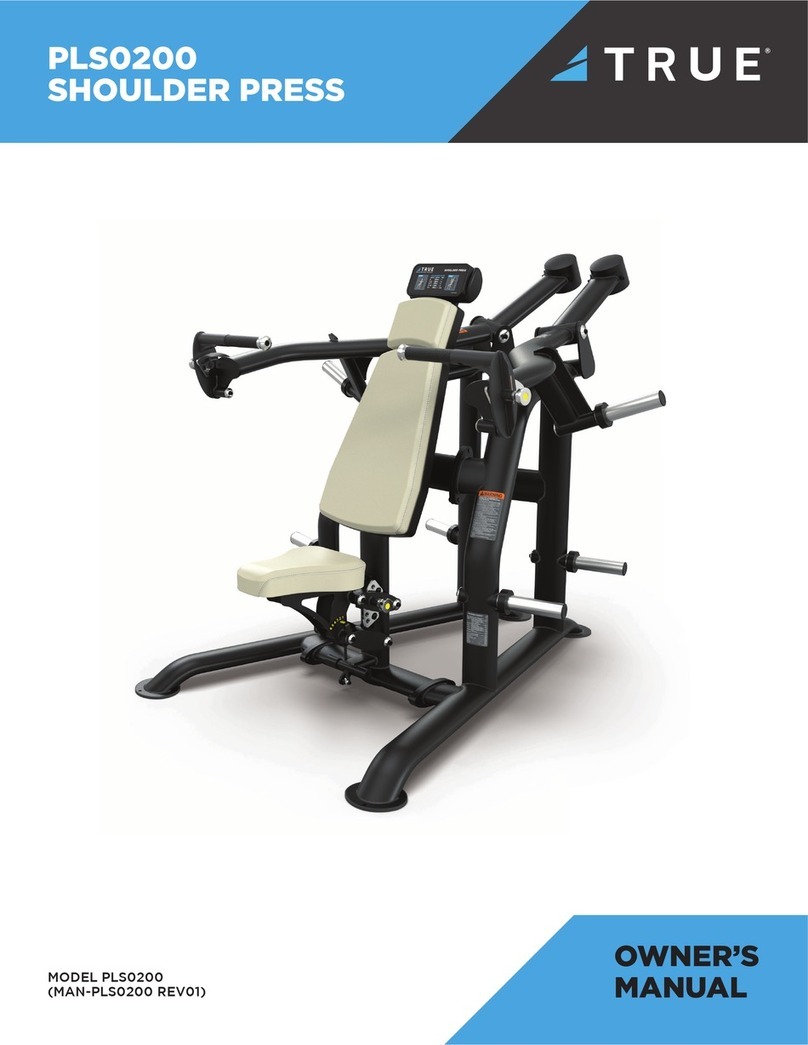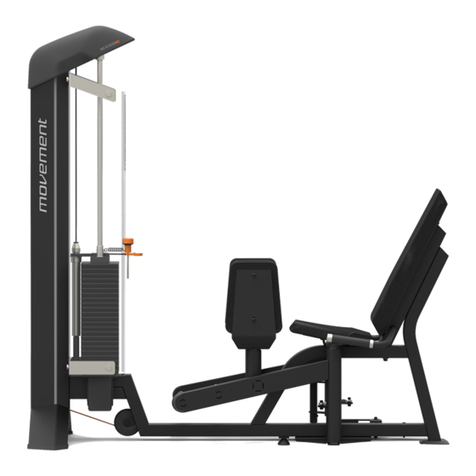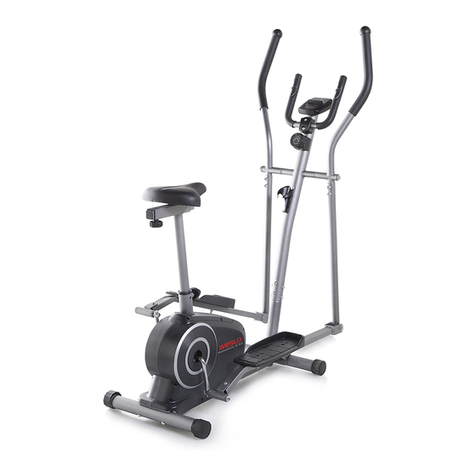NHS ODFS Pace V1 Operator's manual

Model: ODFS®Pace V1
Model: ODFS®Pace XL V1
Software: V1.4
The output of this device has a physiological eect.
The device should only be supplied and set up by a trained clinician.
This instruction manual is intended for the end user and should be supplied to
them by the clinician.
Read the instructions and precautions before use.
USA only: Rx Only
…a confident choice
USER INSTRUCTION MANUAL
Odstock Dropped Foot Stimulator

2
Contents
Introduction
Introduction 4
Key Features of the Stimulator 5
ODFS® Pace (XL) Pouch and Belt Clip 6
Intended Use 7
Important Information
Contraindications 8
Warnings 8 - 10
Precautions 10 - 13
Adverse Reaction / Residual Risk / Safe Disposal 14
Symbols and Denitions 15 - 17
Operating Guide
Changing the Battery 18
System Set-up on a User 19
Controls and Connectors 20
Operating Guide 21 - 25
User Accessible Menu 26 - 27
Auto Turn O 28
The Correct Movement For Dropped Foot Correction 29
Electrode Placement 30 - 31
Setting Stimulation Level 32 - 33
Footswitch Placement 34
Electrodes and Electrode Care 35 - 36
ODFS®Pace XL Wireless Set-up
ODFS®Pace XL Wireless Set-up 37 - 39
Caring for your ODFS®Pace (XL)
Cleaning and Care Guidance 40
Maintenance, Servicing and Calibration 41
Expected Service Life and Maintenance 42
Travel Advice 43
Troubleshooting 44 - 46
Warranty Information 46
2
3
4
5
1

3
Technical Information
Technical Specication - ODFS®Pace (XL) 47
Wireless Information - ODFS®Pace XL 48
Electromagnetic Compliance 49 - 52
Notes 53 - 54
Regulatory Representatives 55
6

4
Introduction
The Odstock Dropped Foot Stimulator ODFS®Pace and it’s wireless version ODFS®Pace
XL is a Functional Electrical Stimulation (FES) device designed to improve walking for people
who have a dropped foot or other gait problems. It is controlled with a footswitch placed in
the shoe, which is used to turn the stimulation on and o at the right time while walking. It
can also be used for exercising muscles while resting using the exercise function.
The device is suitable for people whose walking is aected due to nerve damage in the
spine or brain. This includes stroke, multiple sclerosis, spinal cord injury, hereditary spastic
paraparisis, cerebral palsy, head injury and some people with Parkinson’s disease.
Use of the ODFS® Pace (XL) must be under the supervision of clinical sta trained in its use
by Odstock Medical Limited or their agents.
The ODFS® Pace (XL) should be used as part of an integrated treatment plan. Users should
receive gait re-education training from a suitable clinician while learning to use the device. In
general, users should be in reasonably good health and be able to understand how to use
the system.
Users and/or their family members should contact the clinician who set up the device if they
experience any problems using the ODFS®Pace (XL). Users may also contact Odstock
Medical Limited directly if they need additional assistance.
The ODFS® Pace (XL) must only be set-up by a clinician trained in its use. The clinician
should also review the use of the device regularly. Odstock Medical Limited recommend that
this is done soon after set-up (usually within a week), 6 weeks later, 3 months after that and
then in 6 months and at least annually for as long as the device is used.
1

5
Key Features of the Stimulator
or
OML
GOOD
Pause/start button
Test button
Display
Indicator light
Battery compartment
(on the back)
Electrodes socket
(plastic pin)
Footswitch socket
(metal pin)
Control knob
on/o & output level
1

6
ODFS®Pace (XL) Pouch and Belt Clip
The pouch has an integral belt loop and xing for a carabiner. The belt clip is easily removable,
reducing the overall size if the ODFS®Pace (XL) is carried in a pocket. Use a ball point pen
or other similar tool to press the release button through the hole in the centre of the clip to
allow the clip to slide from the pouch.
1

7
Intended Use
The ODFS® Pace (XL) is intended to be used for the alleviation of neurological injury or
disability due to upper motor neurone disease or injury including stroke, multiple sclerosis
incomplete spinal cord injury (T12 and above), head injury, cerebral palsy, Parkinson’s
disease and hereditary spastic paraparesis. Electrical stimulation is triggered from a switch
input or cyclically during an exercise programme. Gait events are detected by a wired or
wireless footswitch.
The primary application is as a long term orthotic aid for the correction of dropped foot
for both adult and paediatric individuals. Other movement decits can be addressed by
stimulation of additional muscle groups, singularly or in conjunction with the correction of
dropped foot, for the purpose of functional movement training and/or gait assistance.
The ODFS® Pace (XL) may also strengthen muscles, reduce spasticity, increase range of
movement, reduce oedema and increase local blood ow. Stimulation can also modulate the
central nervous system promoting neuroplasticity.
The ODFS® Pace (XL) is designed for use in home healthcare/residential and hospital/
healthcare environments.
The ODFS® Pace (XL) should be supplied and set up by a clinician who has attended an
Odstock Medical Limited training course or course provided by their representative.
1

8
Important Information (Contraindications/Warnings)
The clinician shall brief the user on any known contraindications and warnings to
the use of this system and any precautions to be taken. The clinician shall issue
and guide the user through the User Instruction Manual.
Contraindications
The ODFS®Pace (XL) should not be used on those who have a cardiac pacemaker, implanted
debrillator, or other electronic implanted device unless investigations demonstrate that
there is no interaction between the devices.
Warnings
Neck stimulation
Stimulation should not be applied over the neck, because severe spasm of the muscles
may occur and the contractions may be strong enough to close the airway or cause diculty
breathing. Stimulation over the neck (especially the carotid sinus) could have adverse eects
on heart rhythm or blood pressure.
Open or infected wounds
Stimulation should not be applied over open wounds or over swollen, infected or inamed
areas or skin eruptions. Stimulation should only be applied to normal, intact, clean skin.
Dilated capillaries and movement caused by moving muscles may disrupt healing tissue.
Cancer
Stimulation should not be applied over, or in proximity to, cancerous tissues as increased
local blood ow may increase tumour growth.
Electronic monitoring equipment
Stimulation should not be applied in the presence of electronic monitoring equipment, such
as cardiac monitors and electrocardiogram alarms. Monitoring equipment may not operate
properly when the electrical stimulation device is in use.
Transcerebral stimulation
The eects of stimulation of the brain are unknown. Therefore, stimulation should not be
applied across the head and electrodes should not be placed on opposite sides of the head,
directly on the eyes or covering the mouth.
2
2

9
Important Information (Warnings)
Strangulation
There is a risk of strangulation with the wires of the system. Do not place leads around the
neck. Use an appropriate length of lead.
Chest stimulation
Stimulation should not be applied between the chest and upper back, crossing over the heart,
because the introduction of electrical current into the chest may cause rhythm disturbances
to the heart, which could be fatal.
Epilepsy
Users with suspected or diagnosed epilepsy should follow precautions recommended by
their physicians. The ODFS®Pace (XL) should not be used by people who have poorly
controlled epilepsy. Users should be at least 3 months clear of ts.
Choking
Small parts of the system could be a choking hazard.
Sleeping
Do not use the stimulator whilst sleeping.
Batteries
Only use batteries, chargers and power supplies recommended by Odstock Medical Limited.
All battery technologies carry a very small risk of explosion if used incorrectly. Do not use or
recharge a battery if it is damaged or swollen in any way. Do not charge non-rechargeable
batteries.
Ensure you follow the instructions for installing, using, storing and disposing of the battery
(please refer to instructions for use accompanying the battery charger).
Do not touch the terminals of the battery or battery charger.
Do not charge (rechargeable batteries only), operate or store batteries outside of their
specied temperature ranges.
Do not short circuit the battery. Doing so may lead to excessive heat and possible burns.
When transporting batteries cover the terminals with tape or other non-conductive material
to prevent the terminals electrically shorting.
Please refer to battery specication on page 47 of this instruction manual.
High frequency surgical equipment
Simultaneous connection to high frequency surgical equipment may result in burns at the
site of the stimulator electrodes and possible damage to the stimulator.
2
2

10
Important Information (Warnings/Precautions)
2
Oxygen rich environments
Do not use stimulation within oxygen rich environments such as a hyperbaric oxygen
chamber or in close proximity to an oxygen mask.
External orthopaedic metal xation
Stimulation should not be applied in the area of exposed orthopaedic metal work.
Latex allergies
The elasticated tubular stocking contains natural rubber latex which may cause allergic
reactions. This item is provided as an accessory to the ODFS®Pace (XL) and is not required
for use. Do not use if sensitive to products that contain latex.
Flammability
Do not use the stimulator near ammable fuels, fumes or chemicals. Do not use ammable
cleaning products to clean the device.
Electromagnetic emissions
Use of accessories, transducers and cables other than those specied or provided by
Odstock Medical Limited could result in increased electromagnetic emissions or decreased
electromagnetic immunity of this equipment and result in improper operation.
Use of this equipment adjacent to or stacked with other equipment should be avoided
because it could result in improper operation. If such use is necessary, this equipment and
the other equipment should be observed to verify that they are operating normally.
Portable RF communications equipment (including peripherals such as antenna cables and
external antennas) should be used no closer than 30 cm (12 inches) to any part of the
ODFS® Pace (XL) including cables specied by the manufacturer. Otherwise, degradation of
the performance of this equipment could result.
Precautions
Degradation of stimulator, consumables and accessories
Do not use the device if the stimulator, cables, footswitch or electrodes are damaged in any
way. Replace the cables if they become sti or have cracked insulation.
Handling electrodes
Do not handle electrodes while the stimulation is on. Always make sure that the ODFS®
Pace (XL) is paused before adjusting the electrodes. Only apply electrodes as described in
this instruction manual.
2

11
Important Information (Precautions)
2
Exposed electrode pins
Ensure that the pins of the electrode wire are fully inserted into each electrode before use.
Skin irritation
Some people may experience skin irritation due to electrical stimulation or from the
electrodes. The irritation can usually be reduced by using an alternative type of electrode,
dierent device settings or a new electrode position. A slight reddening of the skin under the
electrodes is normal and this should clear within 1 hour of stopping stimulation. If stimulation
causes long term marking of the skin, the user should discontinue use and contact their
clinician. Please refer to electrode care on page 35 of this instruction manual.
Skin care
Do not shave the skin under the electrodes. If long hairs require removal, cut the hairs using
scissors. If skin moisturisers are required, use overnight and remove residue using warm
water with a mild soap before applying electrodes in the morning.
Prevention of pressure sores.
Users should check the integrity of their skin that is in contact with the electrodes, lead,
footswitch or stimulator, each time the device is used. If pressure marking occurs, remove
the cause of the pressure and recommence use once the skin marking has cleared.
Spasticity
If stimulation causes increased spasticity (involuntary, exaggerated muscle stiness and
spasms), the user should discontinue use and consult their clinician.
Machinery operation and driving
Stimulation should not be used when driving, operating machinery, or during any activity in
which electrical stimulation could distract or put the user at risk of injury.
Bathing/showering/swimming
Do not use stimulation in the bath, shower or when swimming.
Water ingress
Do not get the stimulator or any part of the system or accessories wet. Water ingress may
stop the stimulator or accessories working. If submerged, remove battery (if present), dry
out thoroughly and return to Odstock Medical Limited for assessment. If liquid is spilt on the
stimulator, remove battery and dry out thoroughly prior to re-use.
Shortwave and microwave therapy
Do not use in close proximity (e.g. 1m) to a shortwave or microwave therapy medical
equipment as it may produce instability in the stimulator output.
2

12
Important Information (Precautions)
Autonomic dysreexia
Users who have high level spinal cord injuries (T6 and above), may experience symptoms
of autonomic dysreexia (increased blood pressure or sweating) in response to stimulation.
This may also be seen in users with multiple sclerosis. If aected, the user should discontinue
use and consult their physician.
Cardiac/exercise stress
Users with suspected or diagnosed heart disease should follow the exercise precautions
recommended by their physician.
Deep vein thrombosis
Users with suspected or diagnosed deep vein thrombosis should follow the exercise
precautions recommended by their physician.
Injury, fracture or surgery
Electrical stimulation should not be carried out in areas of the body aected by recent injury,
fracture or surgery. Movement caused by moving muscles may disrupt healing.
Pregnancy
The safety of using electrical stimulation during pregnancy has not been established.
Prescribed user
The device should only be used by the user that the system has been prescribed for. Keep
out of reach of non-intended users. Only use as instructed by the clinician.
Long-term eects
The long-term eects of electrical stimulation are unknown. Odstock devices have been
successfully used by individuals for over 20 years.
Air travel/wireless restricted area
Like all radio telemetry devices the ODFS®Pace XL should not be used in wireless
transmission mode in areas where use of wireless devices is restricted. In areas of restriction
the ODFS® Pace XL can be used in airplane mode, with a wired footswitch. Please refer to
accessory user instructions for details of use within wireless restricted areas. Please refer to
airplane mode on page 27 of this instruction manual
Accessories and consumables
Only use accessories and consumables recommended by Odstock Medical Limited. Do not
connect with equipment other than that intended to be used with this system as dened
within this instruction manual or that of the other equipment.
2

13
Important Information (Precautions)
Battery change and battery cover
Do not operate the stimulator with the battery cover removed. Disconnect all the leads prior
to opening the battery cover. The clinician/carer should not be in contact with the user when
changing the battery.
Equipment modication
Do not tamper with or modify the equipment.
Shelf life
Do not use the consumables if they have passed their expiry date.
Equipment re-use
Electrodes, elasticated tubular stockings and insoles are single patient use only. If re-using
other parts of the system ensure a thorough clean using anti-bacterial wipes.
Storage temperature
Do not store outside of the temperature limits as detailed in the specication on page 47.
If the ODFS®Pace (XL) or accessories (excluding electrodes) have been stored at the
minimum (-20°C) or maximum (70°C) storage temperatures, allow at least 10 minutes in
ambient temperature before use. This time may be required following system removal from
cold storage for the screen on the stimulator to reach full clarity.
Use of small electrodes
The use of small electrodes (less than 32mm diameter) may result in higher charge density
especially when using high output settings (current, pulse width, frequency) and may lead to
an increase in the likelihood of skin irritation. When possible, use larger electrodes. Always
monitor skin condition closely.
Hot surfaces
The surface of the ODFS®Pace (XL) can reach a maximum temperature of 44°C when using
the device at very high output levels and in a maximum ambient temperature of 40°C. Do
not wear next to the skin if using very high output levels with an ambient temperature above
36°C, as this may cause burning of the skin.
2

14
Important Information
2
Adverse reactions
The user should report any undesirable outcomes, malfunctioning of the device, mistakes in
using the device or injury from the use of this device to the clinician who provided it to them.
The clinician is responsible for reporting all adverse events to Odstock Medical Limited or
their local representative.
Residual risk
Even though Odstock Medical Limited have taken all foreseeable steps, through design and
testing, to ensure this device is safe and reliable, there remains a small risk of stimulation not
being delivered when required. This could lead to a trip or fall and possible injury or harm.
Safe disposal of equipment
Care should be taken to dispose of parts and accessories of the device in the correct manner.
In order to protect the environment, the product and its accessories should not be disposed
of in household waste. Please dispose of as per local regulations. Alternatively equipment
can be returned to Odstock Medical Limited for disposal.
2

15
Symbols and Denitions
2
Attention: device has a physiological eect
Caution (used throughout the instruction manual to identify caution item).
Applied parts of insulation type BF.
Read the instructions and precautions before use.
Consult instructions for use.
This product should not be disposed of with other household waste. Your
ODFS® Pace (XL) and accessories can be returned to Odstock Medical
Limited for appropriate disposal.
The CE mark indicates that the ODFS® Pace (XL) complies with the
European Union Medical Device Directive.
Date of manufacture.
IP
22
Protects against the ingress of solid foreign objects of diameter 12.5mm or
greater. Vertically falling water drops have no harmful eect.
ODFS® Pace XL only. Contains a radio transmitting device.
Do not get any part of the system wet.
2

16
Symbols and Denitions
Expiry date (Year, Month, Day) of product (may relate to specic
components, such as electrodes and batteries inside the packaging).
Manufactured by Odstock Medical Limited
Odstock Medical Limited
National Clinical FES Centre Tel: +44 (0) 1722 439540
Salisbury District Hospital www.odstockmedical.com
Do not use if the packaging is substantially damaged. Proceed with
caution and check components for damage prior to use.
Do not store outside of specied temperature limits. If accompanied by
<mo; for storage less than 1 month. If >mo; for storage greater than 1
month.
Do not store outside of the specied relative humidity limits.
Do not store outside of the specied atmospheric pressure limits.
Rotation and power on/o
Location of footswitch socket.
Location of electrode socket.
Test button.
2
2

17
Symbols and Denitions
Pause/start button.
LOT
Batch number.
SN
Unique serial number of the stimulator.
REF
Odstock Medical Limited stimulator reference number.
EC REP
European authorised representative.
Light ashes on the ODFS® Pace (XL)
Beeps heard from the ODFS® Pace (XL)
2
2

18
Changing the Battery
Removing and installing the battery
1. Remove electrode and footswitch leads from the
stimulator.
2. Remove the battery cover by pressing down on the
nger grip and sliding the cover backwards.
3. If a battery is in place then remove by using the corner of
the battery cover to lift the battery.
Do not hit the ODFS®Pace (XL) casing in order to
remove the battery as this may result in damage
to internal components.
4. Insert the battery, ensuring that the battery is orientated
in the correct polarity.
Place the non-terminal end of the battery into the ODFS®
Pace (XL) and rotate the terminal end into the battery
compartment as shown below.
5. Replace the battery cover securely by sliding it on to the
back of the ODFS® Pace (XL) casing.
Prior to replacement of the battery cover check
the battery compartment for loose items that may
cause a short circuit or battery disconnection.
The ODFS®Pace XL is supplied with a lithium polymer
rechargeable battery. This will need to be recharged at the
end of every, or every other day.
Only recharge the lithium polymer battery using
the charger supplied.
A single PP3 9V, alkaline or rechargeable nickel metal hydride (NiMH) or lithium polymer
(LiPo) battery can be used.
If the device is not going to be used for an extended period of time, remove the
battery. Do not use if the battery cover is missing.
1.
2.
3.
4.
Activity data is stored in the memory only when the device is paused. It
is therefore important to pause and turn o the stimulator before removing
the battery to prevent data loss.
3

19
System Set-up on a User
A typical system set-up is shown in the photograph. The footswitch is within the shoe, typically
placed midline of the foot and under the heel. The footswitch is placed on the underside of
the supplied insole. For a wireless set-up (ODFS®Pace XL) the footswitch and footswitch
lead would be replaced by a wireless accessory.
Stimulation
electrodes
(elasticated tubular
bandage can
be placed over
electrodes and
cables)
Electrode lead
Footswitch lead
Footswitch and insole
(within shoe)
ODFS®Pace (XL)
stimulator
Connector
3

20
Controls and Connectors
Controls
Control knob
This control has three actions;
• Twist clockwise to turn up or ‘increase’
• Twist anticlockwise to turn down or ‘decrease’
• Press down and release to unlock, click or select
The control knob is also used to navigate the menu and select menu
options.
Test button
This button is used to test the output level and to assist in nding the
correct electrode position. The test button only functions when the
stimulator is paused. A single envelope or “burst” of stimulation is given
for each press of the test button.
Pause button
This button starts (active mode) and stops (pause mode) stimulation.
Active and pause modes are cycled by pressing the pause button. In
walk mode, a long beep is given for entering active mode and a shorter,
higher pitched beep is given for exiting active mode.
When the pause mode is entered, the display will briey show the battery
condition. To keep the battery condition displayed for longer, continue to
hold down the pause button.
Connectors
Electrode lead socket
Located on the side of the case near the top and identied with a waveform
symbol. This is where the electrode lead is plugged into.
Footswitch lead socket
Located on the side of the case below the electrode socket and identied
with a footprint symbol. This is where the footswitch lead is plugged into.
The ODFS® Pace XL can use a wired footswitch. Simply plug in the
footswitch when the ODFS® Pace XL is paused. To revert to wireless,
disconnect the wired footswitch.
OML
GOOD
3
This manual suits for next models
1
Table of contents
Other NHS Fitness Equipment manuals
